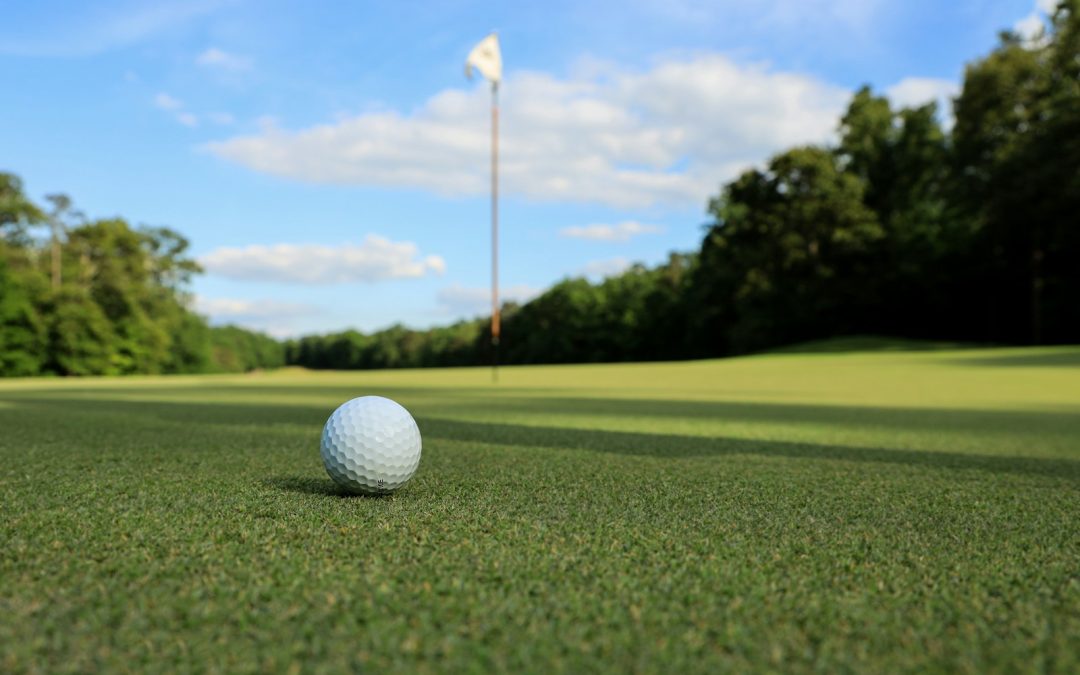Golf and the Masters: A Comprehensive Guide to Injury Prevention
Golf, a sport known for its precision and finesse, places significant physical demands on it's participants. In the context of prestigious tournaments like the master’s at Augusta National, injury prevention becomes a paramount concern. This blog aims to shed light on the importance of injury prevention in golf, with a particular focus on the upcoming Masters tournament.
From common golf injuries to preventive measures, pre-tournament preparation, the role of equipment, fitness and conditioning, and nutrition strategies; this comprehensive guide aims to equip golfers with the knowledge and tools to safeguard their well-being on the course.
Common Golf Injuries Overview
Back strain:
- Cause: The rotational forces during a golf swing can place stress on the lower back, leading to strains or muscle imbalances.
- Prevention: Incorporating core-strengthening exercises and maintaining proper swing mechanics can help prevent back injuries.
- Exercise: Core-strengthening exercises such as planks, side planks, and bird-dogs.

Golfer's Elbow (Medial Epicondylitis):
- Cause: Overuse of the muscles and tendons on the inside of the elbow, often exacerbated by poor swing mechanics.
- Prevention: Strengthening forearm muscles, using proper swing techniques, and allowing for adequate recovery can help prevent golfer’s elbow.
- Exercise: Forearm flexor and extensor strengthening exercises using resistance bands or light dumbbells.
ROTATOR CUFF INJURIES:
- Cause: The repetitive nature of the golf swing can contribute to overuse injuries in the shoulder, affecting the rotator cuff.
- Prevention: Regular shoulder exercises to strengthen the rotator cuff muscles and ensuring a proper warm-up before playing can reduce the risk.
- Exercise: Rotator cuff exercises, including internal and external rotation exercises using resistance bands or light weights.
Wrist and Hand Injuries:
- Cause: The impact between the club and the ball, especially if the swing is off-centre, can lead to injuries in the wrists and hands.
- Prevention: Strengthening forearm muscles, maintaining proper grip techniques, and using proper equipment can help prevent wrist and hand injuries.
- Exercise: Wrist curls and reverse wrist curls with light dumbbells.
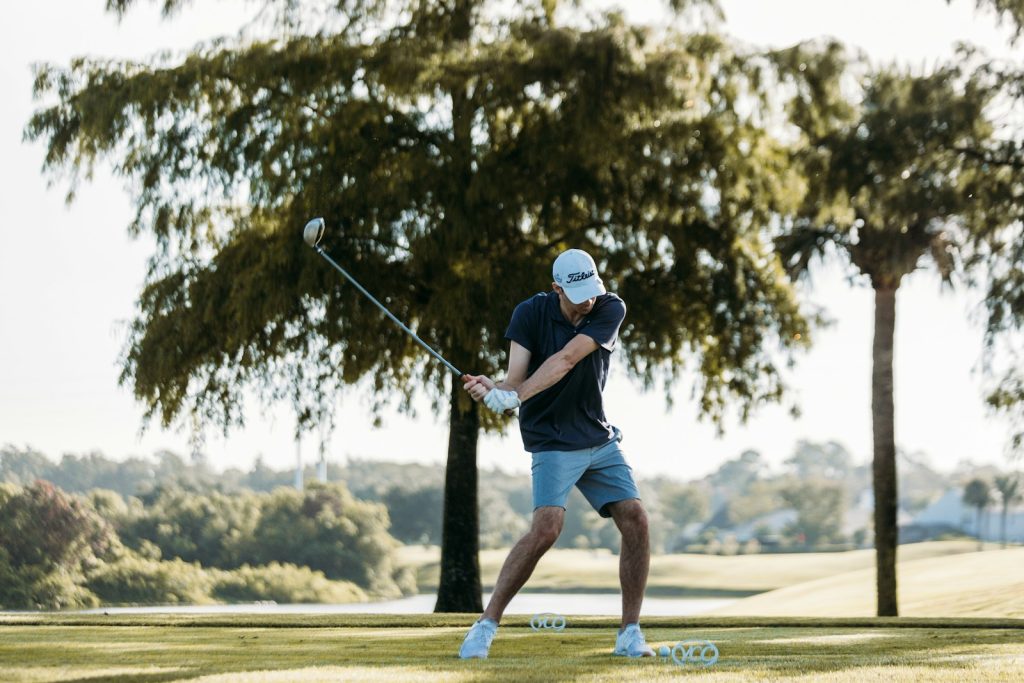
Knee Strain:
- Cause: The twisting motion of the golf swing can strain the knee, especially if the golfer has poor biomechanics.
- Prevention: Strengthening the muscles around the knee and ensuring proper weight transfer during the swing can help prevent knee injuries.
- Exercise: Leg strengthening exercises such as squats, lunges, and leg presses.
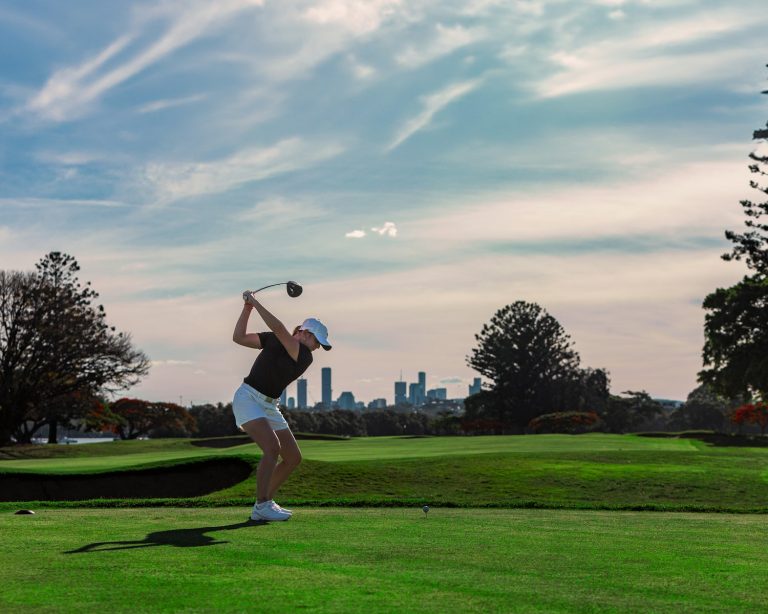
Hip Injuries:
- Cause: The rotational forces involved in the golf swing can contribute to hip injuries, particularly if there are imbalances or lack of flexibility.
- Prevention: Incorporating hip-strengthening exercises and maintaining overall flexibility can help prevent hip injuries.
- Exercise: Hip-strengthening exercises like hip bridges, lateral leg raises, and clamshells.
Overuse Injuries:
- Cause: The repetitive nature of the golf swing and playing multiple rounds without adequate rest can lead to overuse injuries in various parts of the body.
- Prevention: Allowing for proper rest between rounds, incorporating cross-training activities, and maintaining a balanced golf schedule can help prevent overuse injuries.
- Exercise: Cross-training activities such as swimming, cycling, or walking to provide variation in physical activity.
Measures for GOLFERS
EFFECTIVE WARM-UP ROUTINES:
- Purpose: A proper warm-up is essential for preparing the body for the demands of the golf swing. It increases blood flow, raises body temperature, and enhances joint flexibility.
- Recommendations: Begin with 5-10 minutes of light cardiovascular exercise, such as brisk walking or jogging, to elevate the heart rate. Incorporate dynamic stretches that mimic golf movements, focusing on the shoulders, hips, and spine. Gradually progress to specific golf-related drills, such as practice swings with a lighter club.
Incorporating Stretching Exercises:
- Purpose: Stretching plays a pivotal role in maintaining flexibility and preventing muscle imbalances that can lead to injuries during the golf swing.
- Recommendations: Emphasise dynamic stretching before play, focusing on major muscle groups involved in the swing, such as the hamstrings, shoulders, and torso. Include static stretching in the post-round routine to improve flexibility and reduce muscle tightness. Pay particular attention to the wrists, forearms, and lower back, areas often prone to stress during the swing.
IMPLEMENTING PROPER SWING TECHNIQUES:
- Purpose: Refining and maintaining proper swing mechanics not only improves performance but also minimises the risk of overuse injuries.
- Recommendations: Seek guidance from a golf professional to ensure correct swing mechanics, addressing issues such as posture, grip, and alignment. Focus on a smooth and controlled swing to reduce unnecessary stress on joints and muscles. Regularly engage in drills that reinforce proper technique, helping to prevent the development of bad habits.

Managing fatigue & Avoiding over-exertion:
- Purpose: Fatigue can compromise both physical and mental aspects of performance, increasing the risk of injuries. Effective fatigue management is crucial for sustaining energy levels throughout the game.
- Recommendations: Stay adequately hydrated throughout the round, as dehydration can contribute to fatigue and muscle cramps. Take short breaks during the round to rest and refocus, especially on hot and physically demanding days. Monitor workload during practice sessions and tournaments to prevent overexertion and reduce the risk of cumulative stress injuries.
Pre-Tournament Preparation
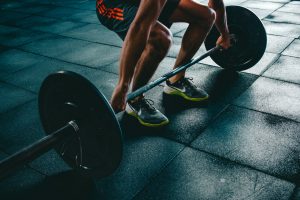
Strength and Conditioning Exercises:
- Purpose: Enhance overall strength, stability, and flexibility, crucial for executing precise and powerful swings while reducing the risk of injuries.
- Specific Exercises: Full-body strength training routines incorporating compound movements like squats, deadlifts, and lunges. Core-strengthening exercises to provide stability during rotational movements. Flexibility exercises targeting key areas such as hips, shoulders, and spine.
Sport-Specific Drills:
- Purpose: Fine-tune muscle memory, reinforce proper swing mechanics, and improve coordination.
- Specific Drills: Extensive practice on the driving range focusing on different aspects of the swing, including tempo and timing. Short-game drills to sharpen skills around the greens. Simulation of on-course scenarios to build mental resilience and adaptability.
CARDIOVASCULAR CONDITIONING:
- Purpose: Improve endurance to sustain energy levels throughout the tournament, especially during extended rounds and multiple days of play.
- Specific Exercises: Cardio workouts such as running, cycling, or interval training to enhance cardiovascular fitness. On-course walking or simulated rounds to acclimate to the physical demands of tournament play.
REST AND RECOVERY:
- Purpose: Ensure optimal physical and mental readiness by prioritising adequate rest and recovery.
- Strategies: Scheduling rest days or lighter training sessions leading up to the tournament. Adequate sleep to support physical and cognitive recovery. Incorporating relaxation activities such as massage or meditation.
Equipment and Its Role in Injury Prevention:
1. GOLf CLUBS
PROPERLY FITTED CLUBS:
- Importance: Using clubs that are correctly fitted to a golfer’s height, swing speed, and skill level is fundamental.
- Injury Prevention: Ill-fitted clubs can lead to compensatory movements during the swing, increasing the risk of musculoskeletal injuries. A professional club fitting ensures that the golfer’s equipment complements their unique biomechanics, reducing the likelihood of strain or injury.
SHAFT FLEXIBLITY:
- Importance: The flexibility of the club shaft can impact the transfer of energy during the swing.
- Injury Prevention: Choosing a shaft with the appropriate flexibility for a golfer’s swing helps to distribute forces more evenly, reducing the strain on joints and muscles.

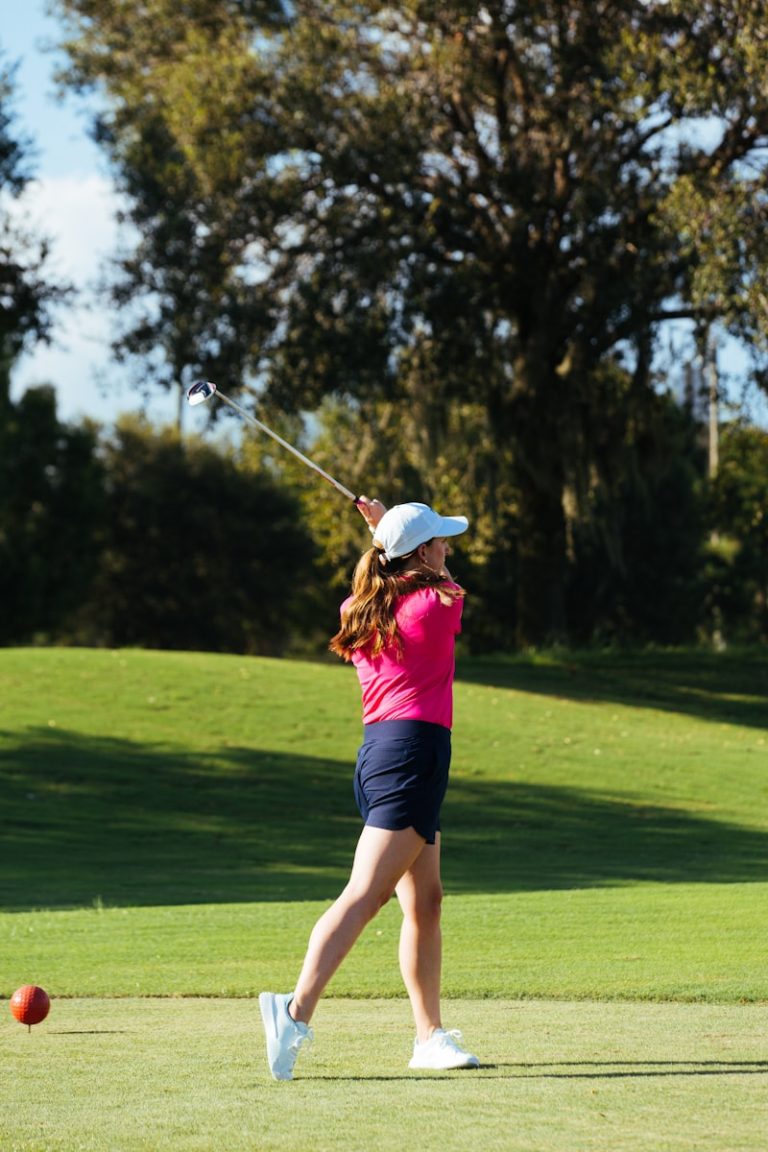
2. GOLF SHOES
Supportive footwear:
- Importance: Golf involves extensive walking, and proper footwear is essential for stability and comfort.
- Injury Prevention: Shoes with good arch support and cushioning can reduce the impact on joints, especially during prolonged walks on the course. Additionally, shoes with traction help maintain balance during the swing, preventing slips and potential injuries.
Spiked or Spikeless?:
- Importance: The choice between spiked and spikeless golf shoes depends on personal preference and playing conditions.
- Injury Prevention: Spiked shoes provide additional grip, particularly in wet conditions, reducing the likelihood of slipping. Spikeless shoes, on the other hand, are often more comfortable and versatile, providing stability without the protruding spikes.
Fitness and Conditioning for Golfers:
1. Strength training
Targeted Muscle Groups:
- Importance: Golf swings heavily rely on core strength, hip stability, and muscular balance.
- Injury Prevention: A strong core provides stability during rotation, reducing the risk of lower back injuries. Strengthening the hips and legs contributes to overall stability and power generation.
Functional movements:
- Importance: Incorporating functional exercises that mimic golf movements.
- Injury Prevention: Functional strength helps golfers maintain proper biomechanics throughout the swing, reducing the strain on joints and muscles.
BALANCED WORKOUTS:
- Importance: Ensuring a balanced approach to muscle development.
- Injury Prevention: Balanced strength across muscle groups promotes optimal movement patterns, preventing overuse injuries and muscular imbalances.
2. Flexibility Exercises
DYNAMIC STRETCHING:
- Importance: Preparing the body for the dynamic movements of the golf swing.
- Injury Prevention: Dynamic stretching enhances joint flexibility and range of motion, reducing the risk of strains and injuries during the swing.
TARGETTED STRETCHING:
- Importance: Concentrating on key areas such as shoulders, hips, and wrists.
- Injury Prevention: Targeted stretching addresses specific areas prone to stress during the golf swing, promoting flexibility and reducing the risk of strains.
INTERVAL TRAINING:
- Importance: Mimicking the intensity fluctuations experienced during a round of golf.
- Injury Prevention: Interval training conditions the body for the variable intensities of the game, enhancing overall fitness and reducing the risk of overexertion.
NUTRITION, REST & RECovery
1. IMPORTANCE OF PROPER NUTRITION
Fuelling Energy Levels:
- Importance: Golf is a physically demanding sport that requires a consistent and sustained energy supply.
- Tips: Consume a well-balanced diet with a mix of carbohydrates, proteins, and healthy fats to provide sustained energy throughout the day. Incorporate complex carbohydrates such as whole grains, fruits, and vegetables to ensure a gradual release of energy.
hydration:
- Importance: Dehydration can negatively impact concentration, coordination, and overall performance.
- Tips: Drink water consistently throughout the round, aiming for at least eight glasses per day. Rehydrate with sports drinks containing electrolytes to replenish lost minerals during extended play.
nutrient timimg:
- Importance: Strategic timing of meals and snacks can optimise energy utilisation.
- Tips: Have a balanced meal 2-3 hours before the round, including lean proteins, complex carbohydrates, and vegetables. Consume small, easily digestible snacks between rounds to maintain energy levels.
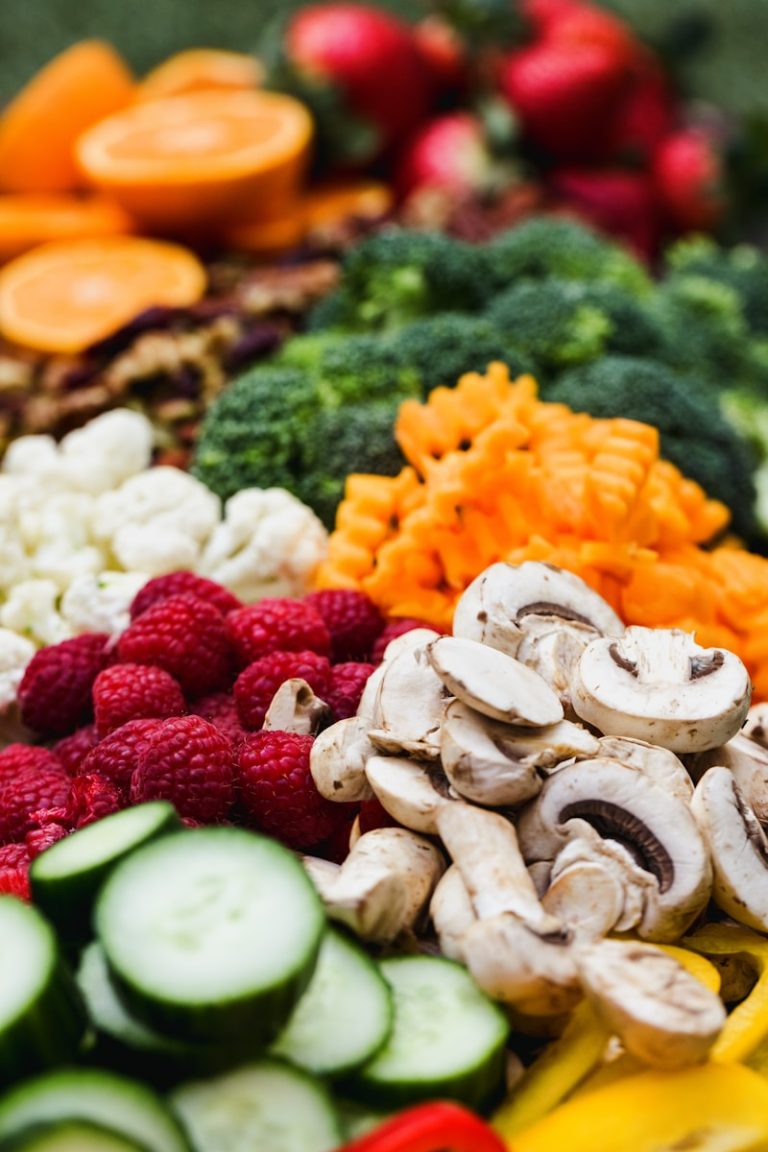
Post-Round Nutrition:
- Importance: Swift replenishment of nutrients post-round aids in recovery and prepares the body for the next day.
- Tips: Consume a protein-rich snack within 30 minutes of completing a round to initiate muscle repair and glycogen replenishment. Include carbohydrates and electrolytes to restore energy levels and hydration.
2. Recovery Strategies
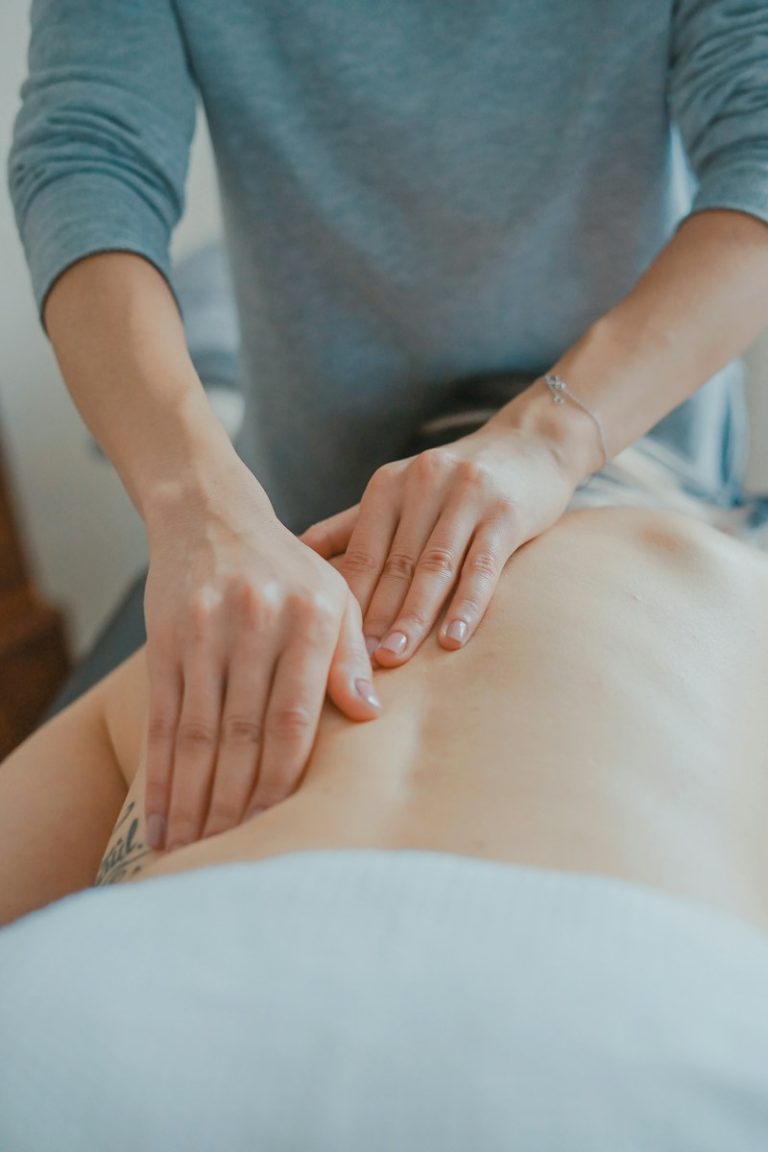
SLEEP QUALITY:
- Importance: Quality sleep is essential for physical recovery and mental acuity.
- Tips: Establish a consistent sleep routine, aiming for 7-9 hours per night during tournament weeks. Create a conducive sleep environment by minimizing light and noise.
ACTIVE RECOVERY:
- Importance: Gentle movement aids in reducing muscle stiffness and promotes circulation.
- Tips: Engage in light activities such as walking or swimming on rest days to enhance recovery without adding excessive strain. Include stretching or yoga to improve flexibility and reduce muscle tightness.
SPORTS MASSAGE:
- Importance: These therapies can alleviate muscle soreness and enhance overall recovery.
- Tips: Schedule regular massages or use compression garments to improve circulation and reduce inflammation. Utilise foam rolling or self-massage techniques for targeted muscle relief.
If you wish to seek further help or speak to a practitioner about any of the above, call us on 0800 731 2738 or book online here.
You can also view all the services we provide within our clinics on our website, as well as checking out our other blogs and content.
For more free tips and information, make sure to follow our Facebook and Instagram pages. We also post client stories, so you can see how we’ve helped people get back to doing the things they enjoy!
